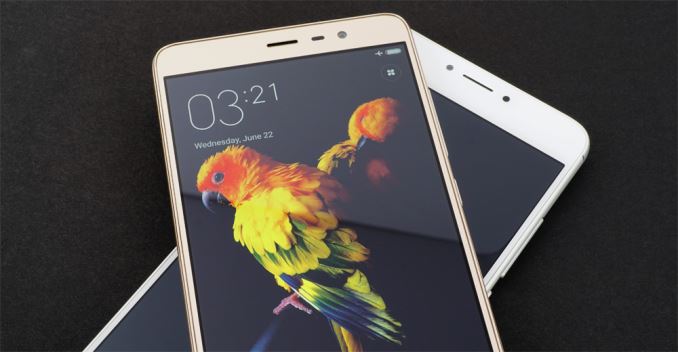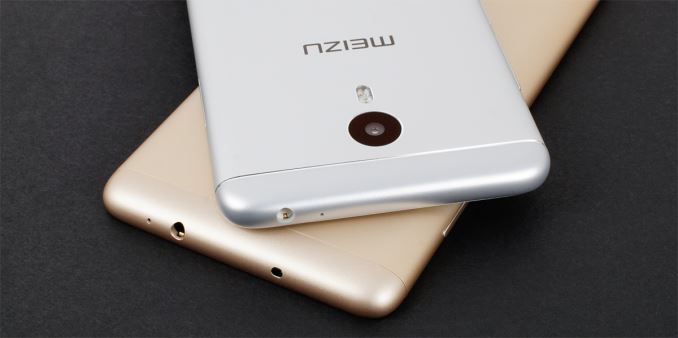The Meizu M3 Note vs. Xiaomi Redmi Note 3 Review: Comparing Notes
by Matt Humrick on July 12, 2016 8:00 AM EST- Posted in
- Smartphones
- Mobile
- Xiaomi
- Meizu
- Redmi
Final Words
I’ll admit it: I’m spoiled. I’m used to using the latest technology and playing with the recent flagship phones. I do not get many opportunities to review lower-cost devices, so I was not sure what kind of user experience to expect. After looking at the Meizu M3 note and the Xiaomi Redmi Note 3, I can say that both exceeded my initial expectations but in different ways and to different degrees.
The M3 note’s aluminum chassis is sturdy, with an attractive, symmetrical design. Additional machining details, such as the groove for the volume and power controls and the slots on the back that hide the endcap seams, are a nice touch shared with Meizu’s more expensive models. The M3 note also has a great fingerprint sensor, and Meizu’s Flyme OS includes some nice navigation features, like swiping up from the lower bezel to access recent apps instead of tapping a dedicated button.
The Redmi Note 3 and its Snapdragon 650 SoC easily outperforms other phones in its price range and approaches flagship numbers in some of our system performance tests. It cannot match the peak GPU performance of higher-tier SoCs, but its sustained performance is nearly the same once temperature forces the other GPUs to throttle frequency. Whether opening or switching apps, navigating the UI, scrolling in the browser, or working in apps, this phone feels fast. The Redmi Note 3 is a clear leader in performance per dollar.
Due in part to their larger-than-4000mAh batteries, both phones deliver excellent battery life, lasting more than 12 hours in our Wi-Fi browsing test—the longest of any phones we’ve tested—and nearly as long in PCMark. The M3 note’s battery life is generally a little better than the Redmi Note 3’s, but the latter remains close while delivering much better performance.
While there are positive elements for both phones, we need to be realistic. Neither phone delivers the same user experience or has the same feature set as more expensive flagships. In order to reach a lower price point, some compromises naturally need to be made. This becomes obvious as soon as their displays light up. Both panels are capable of reaching a respectable 450 nits max brightness and have good viewing angles, but black levels are subpar even among other phones in their class. Both panels also fail to cover the full sRGB gamut, reducing color accuracy. Their default calibrations also miss the target white point, giving the Redmi Note 3’s screen a blue tint and the M3 note’s a magenta hue. Both phones offer the ability to adjust white point, but only the Redmi Note 3 provides a setting that actually improves grayscale accuracy. Unfortunately, the Redmi Note 3’s poorly configured gamma leaves its screen looking dark with less shadow detail, which is most noticeable when watching movies or playing games.
Camera performance is another area where these two phones struggle. The Redmi Note 3 is clearly the better of the two, capable of capturing some nice looking images in good lighting. Its HDR mode is also effective, naturally brightening darker areas while maintaining color saturation and detail. As the lights dim, however, its performance drops. Like the M3 note and the other phones we tested in this price class, it produces noisy images lacking in detail. Even with good lighting, the M3 note’s images show excessive shot noise that noticeably degrades image quality. It also experiences issues with exposure and focus in certain conditions.
The M3 note is noticeably slower than the Redmi Note 3, but its performance is similar to other phones in its price range. People who primarily use their phone as a communication device—phone calls, email, messaging—or for working with lightweight apps—scheduling, note taking, web browsing—will likely find it to be fast enough. The M3 note can handle casual games, but it’s not capable of playing more demanding 3D titles.
At the beginning of this review I noted how similar the M3 note and Redmi Note 3 are on paper and wondered if this would translate into an equivalent user experience. The short answer is no. The Redmi Note 3’s superior performance and slightly better camera give it the edge. It just feels fast, much faster than its peers using octa-core A53 CPUs, which just are not going to be competitive at this price point anymore.
While the pace of innovation at the high-end naturally slows, the mid-range and low-end phones start looking more attractive. Flagship features and hardware continue to trickle down to lower price points, producing more-capable phones with better user experiences. Both the M3 note and Redmi Note 3 are evidence of this trend. Xiaomi’s introduction of the Redmi Note 3, however, goes even further, signaling a jump in capability that all new phones in its category will need to match.














79 Comments
View All Comments
kpb321 - Tuesday, July 12, 2016 - link
The article Matt posted is good but the short answer is that it is a combination of the Modem in the SOC, the antenna's/filters/amplifiers in the phone and the software configuration for the Modem that determine the supported band(s). Usually the antenna's/filters/amplifiers are the real limiting factor as modern SOCs all support a large variety of different bands and the software configuration can be changed.Death666Angel - Tuesday, July 12, 2016 - link
On that point, I think there are people on XDA who have flashed Qualcomm based Chinese phones with missing Band20 LTE and gotten it to work with Band20. Only QC based phones so far though.adityarjun - Wednesday, July 13, 2016 - link
Thank you all. I had a feeling it was the antenna/amplifier part. I will go over the article Matt posted. Thanks again.ianmills - Tuesday, July 12, 2016 - link
This review missed the biggest weakness of the xiaomi IMHO. The phone is very slippery and hard to hold. This causes me to hold the phone tightly in order to prevent dropping it. This leads to the next problem. The forced gripping of the phone means that my holding fingers often touch the edge of the screen which means lots of accidental presses. The capacitive buttons at the bottom of the phone are so close to the edge that they are accidentally touched as well.I could use a case to remedy this, but this is already as very big phone. Instead I put stickers on to give it texture and make it easier to hold. Works decent but the stickers keep fall off....
fanofanand - Tuesday, July 12, 2016 - link
Sounds like my Nexus 4 that lasted all of 8 days before falling 3 feet to it's demise.ianmills - Tuesday, July 12, 2016 - link
Much worse than the N4. I remember the N4 being a problem until I learned to hold it properly. I've had the Xiaomi for about 4 months now and holding it is still a major problem. You won't think the N4 back glass is slippery anymore after holding this phone :PImpulses - Thursday, July 14, 2016 - link
Yeah, glass actually ends up stickier and mates more surface area against anything else... Brushed metal with very smooth edges and no trim ends up being very slippery.Pissedoffyouth - Wednesday, July 13, 2016 - link
I definitely don't have this problem. You can get ultra-thin grippy cases that don't add much bulk to the phone.TheCurve - Tuesday, July 12, 2016 - link
Solid and opportune review. Thanks for the good work, Mattjjj - Tuesday, July 12, 2016 - link
At least for SoCs you haven't reviewed before you guys need a CPU benchmark too. PCMark and Dicsomark are very software dependent and the browsing benchmarks are kinda sucky.The clear leader in perf per $ is the 360 Mobile N4. With Helio X20 (MT6797m) , 4GB RAM, fast charging at 899CNY(135$).